Abstract
Antigen-antibody complexes efficiently inhibit the induction of antibody formation. Using Mishell-Dutton cultures, it can be demonstrated that neither T cells nor their products are required for this inhibition of IgM PFC formation. The blockade is at the level of B cells and cannot be overcome by LPS or TRF. The data demonstrate that cross-linking of antigen- and Fc-receptors by antigen-antibody complexes is a blocking signal for B cells.
Full text
PDF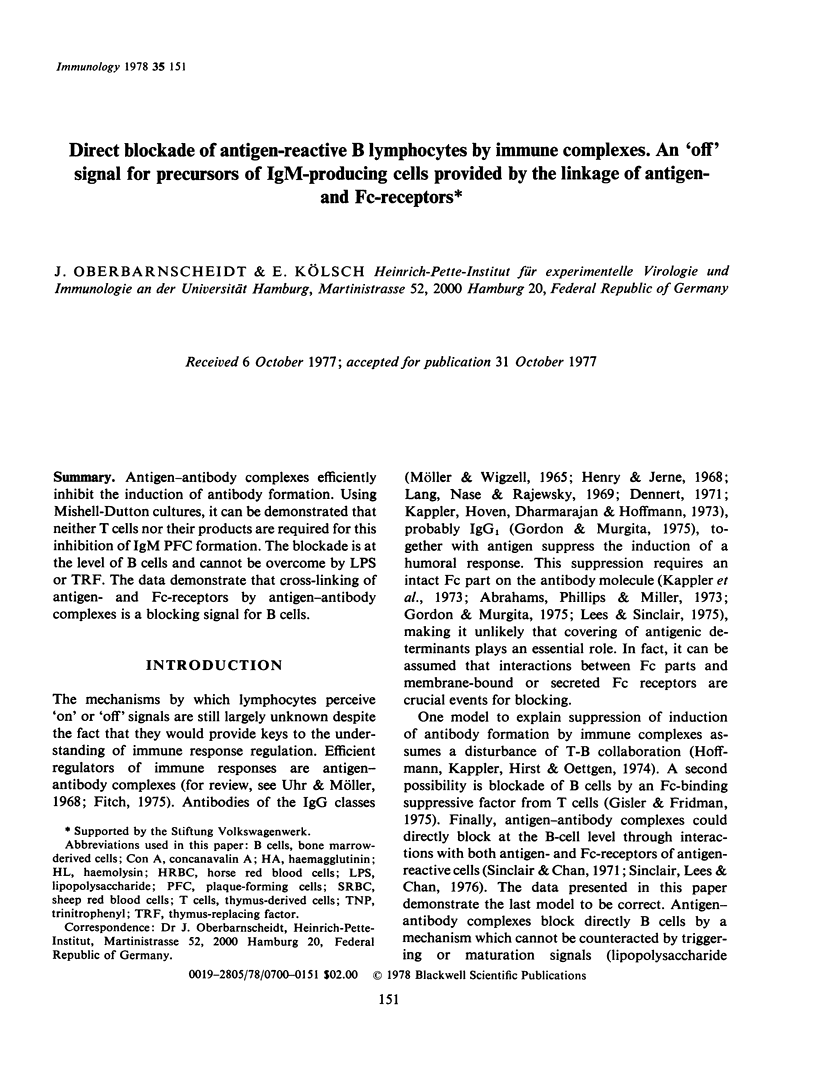
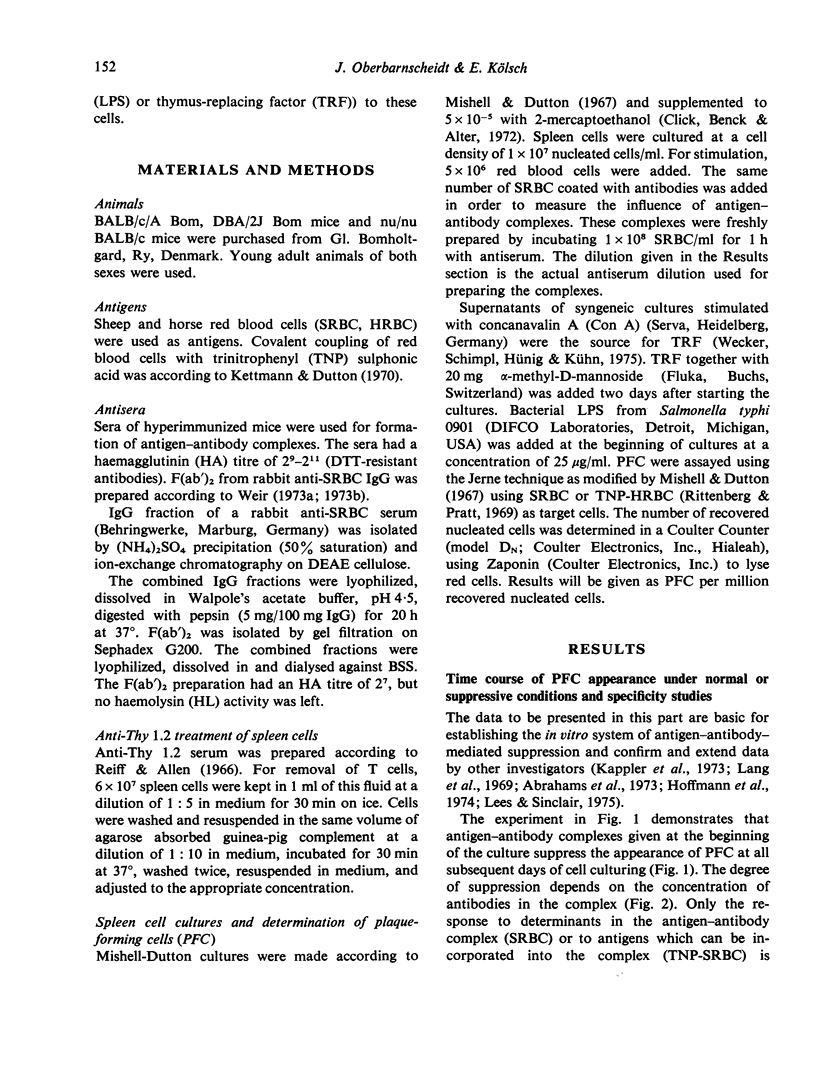
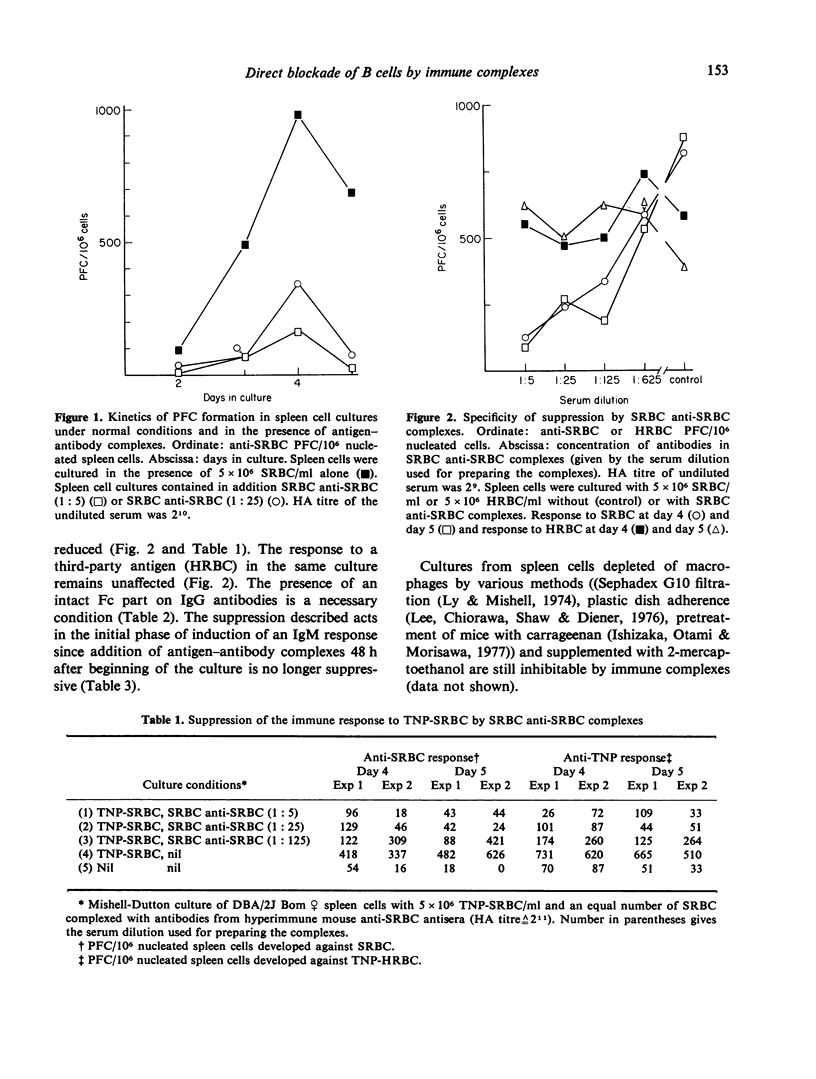
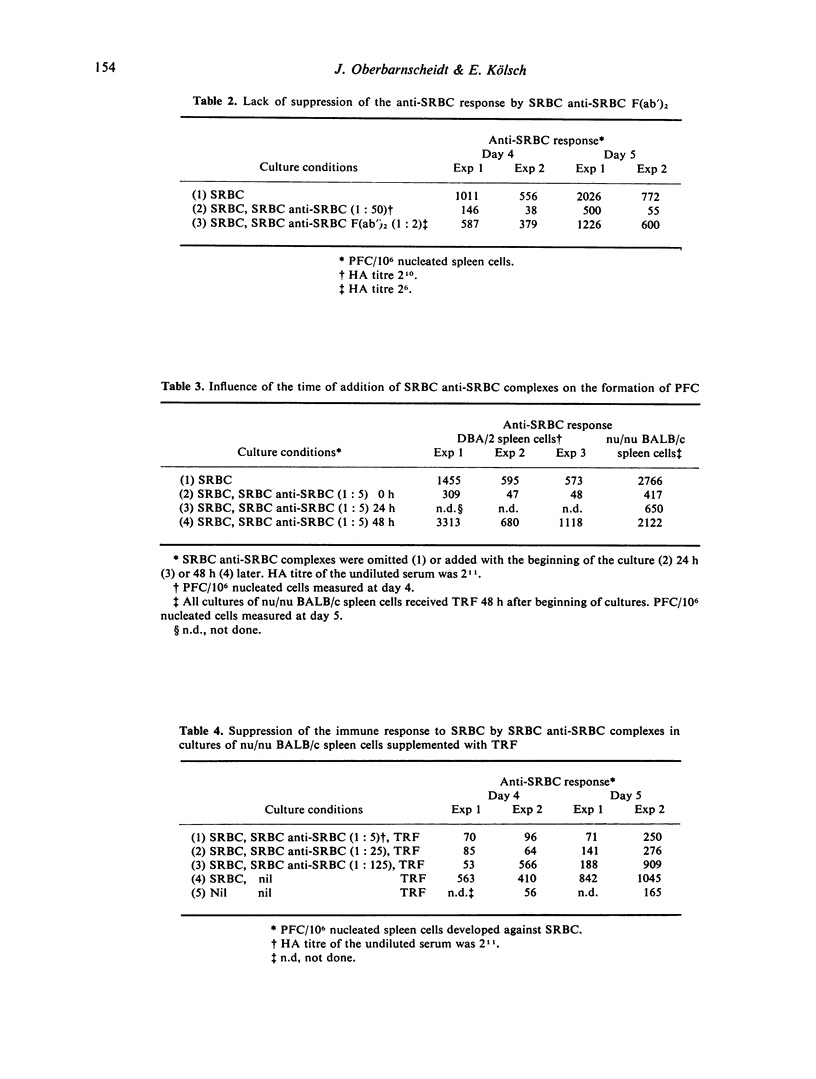
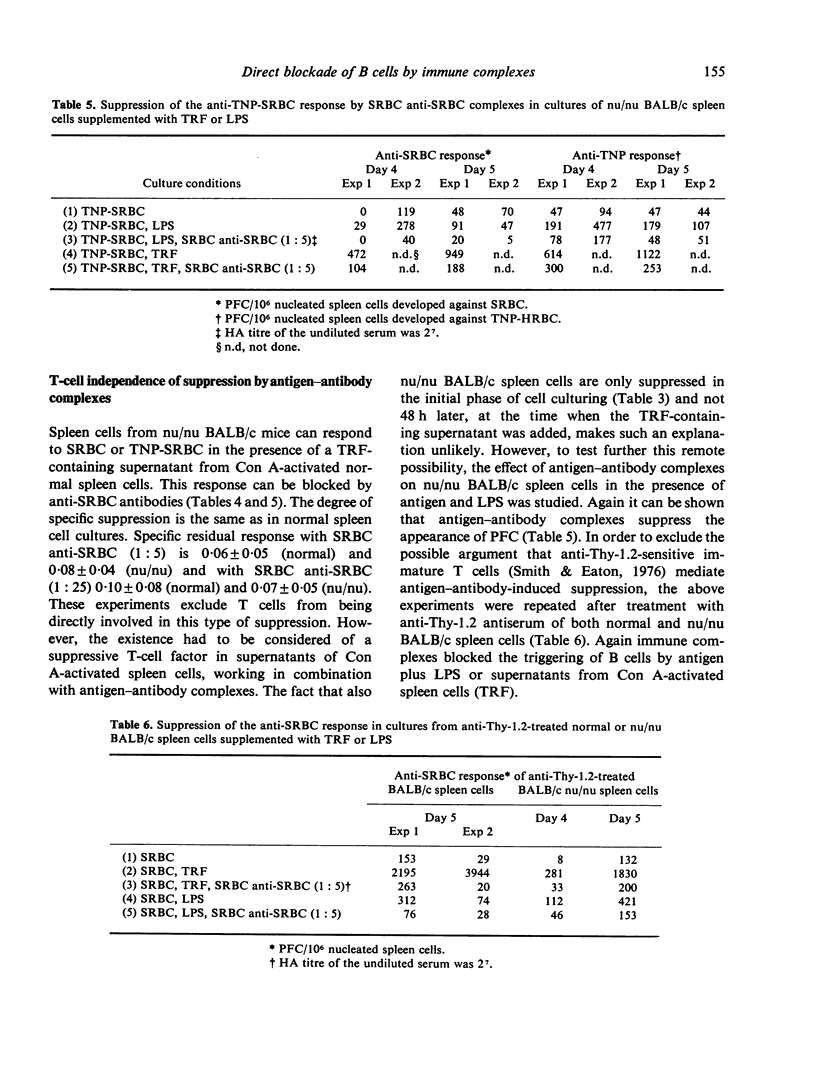
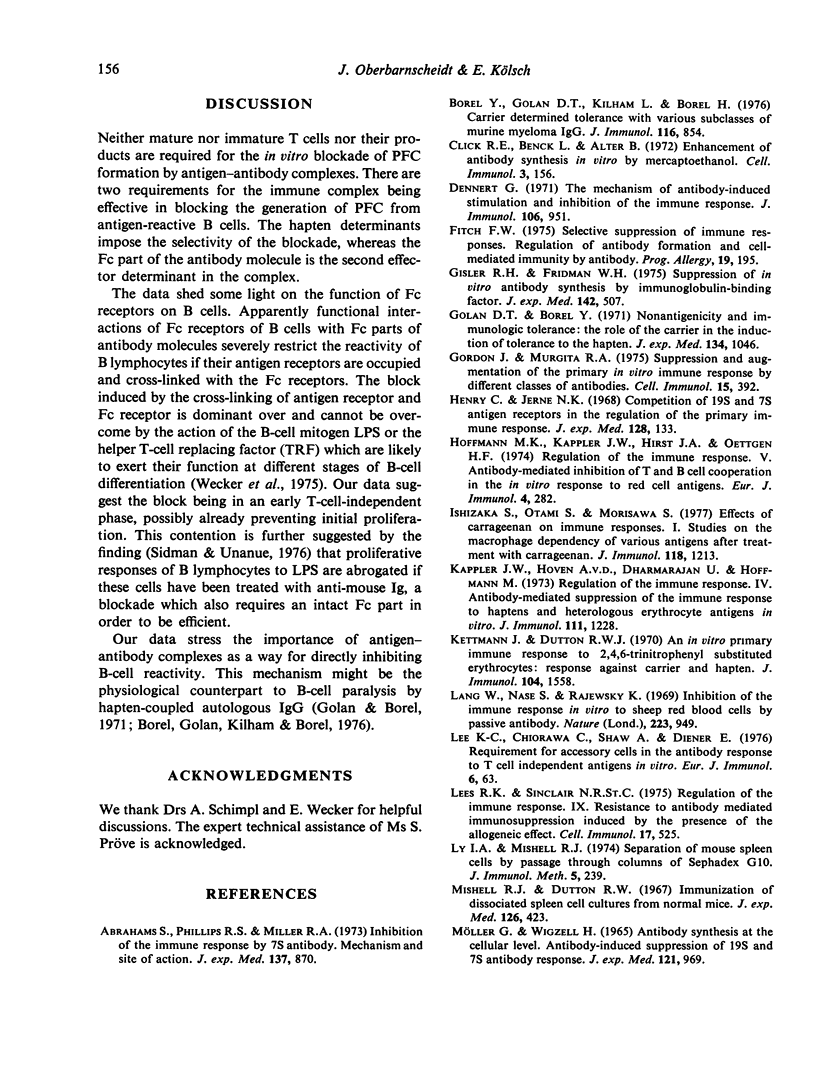
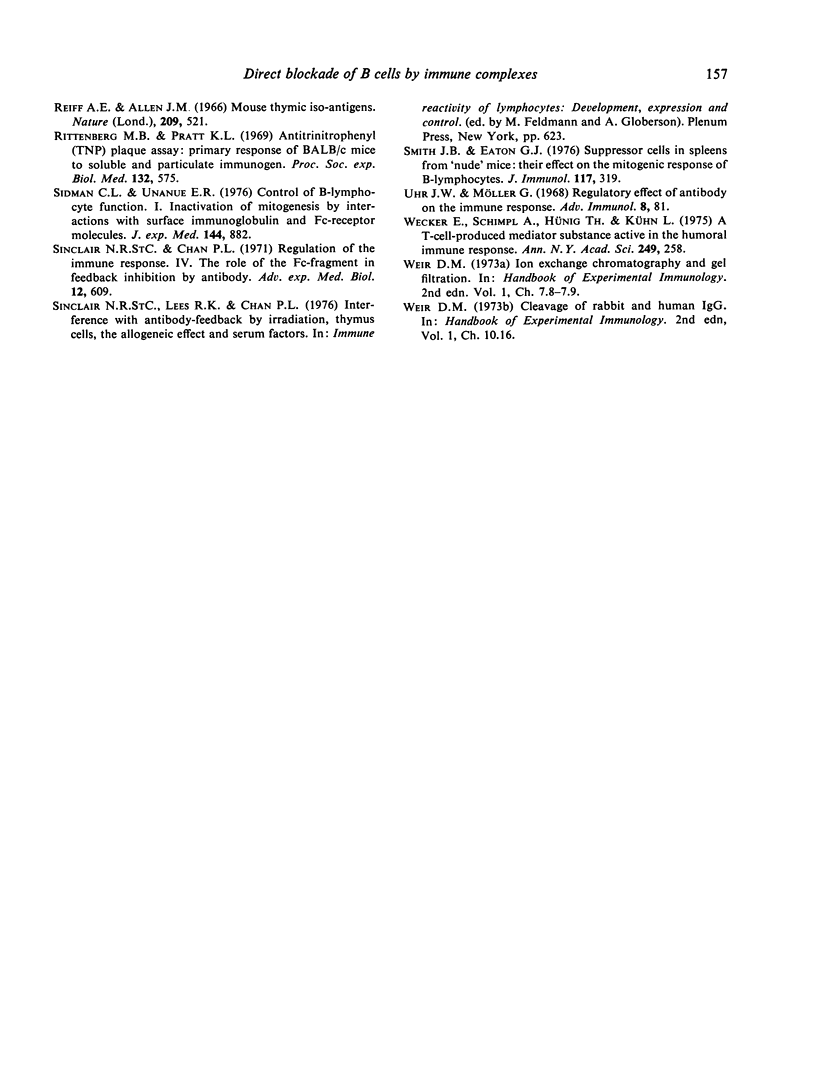
Selected References
These references are in PubMed. This may not be the complete list of references from this article.
- Abrahams S., Phillips R. A., Miller R. G. Inhibition of the immune response by 7S antibody mechanism and site of action. J Exp Med. 1973 Apr 1;137(4):870–892. doi: 10.1084/jem.137.4.870. [DOI] [PMC free article] [PubMed] [Google Scholar]
- Borel Y., Golan D. T., Kilham L., Borel H. Carrier determined tolerance with various subclasses of murine myeloma IgG. J Immunol. 1976 Mar;116(3):854–858. [PubMed] [Google Scholar]
- Click R. E., Benck L., Alter B. J. Enhancement of antibody synthesis in vitro by mercaptoethanol. Cell Immunol. 1972 Jan;3(1):156–160. doi: 10.1016/0008-8749(72)90237-7. [DOI] [PubMed] [Google Scholar]
- Dennert G. The mechanism of antibody-induced stimulation and inhibition of the immune response. J Immunol. 1971 Apr;106(4):951–955. [PubMed] [Google Scholar]
- Fitch F. W. Selective suppression of immune responses. Regulation of antibody formation and cell-mediated immunity by antibody. Prog Allergy. 1975;19:195–244. [PubMed] [Google Scholar]
- Gisler R. H., Fridman W. H. Suppression of in vitro antibody synthesis by immunoglobulin-binding factor. J Exp Med. 1975 Aug 1;142(2):507–517. doi: 10.1084/jem.142.2.507. [DOI] [PMC free article] [PubMed] [Google Scholar]
- Golan D. T., Borel Y. Nonantigenicity and immunologic tolerance: the role of the carrier in the induction of tolerance to the hapten. J Exp Med. 1971 Oct 1;134(4):1046–1061. doi: 10.1084/jem.134.4.1046. [DOI] [PMC free article] [PubMed] [Google Scholar]
- Gordon J., Murgita R. A. Suppression and augmentation of the primary in vitro immune response by different classes of antibodies. Cell Immunol. 1975 Feb;15(2):392–402. doi: 10.1016/0008-8749(75)90017-9. [DOI] [PubMed] [Google Scholar]
- Henry C., Jerne N. K. Competition of 19S and 7S antigen receptors in the regulation of the primary immune response. J Exp Med. 1968 Jul 1;128(1):133–152. doi: 10.1084/jem.128.1.133. [DOI] [PMC free article] [PubMed] [Google Scholar]
- Hoffmann M. K., Kappler J. W., Hirst J. A., Oettgen H. F. Regulation of the immune response. V. Antibody-mediated inhibition of T and B cell cooperation in the in vitro response to red cell antigens. Eur J Immunol. 1974 Apr;4(4):282–286. doi: 10.1002/eji.1830040410. [DOI] [PubMed] [Google Scholar]
- Ishizaka S., Otani S., Morisawa S. Effects of carrageenan on immune responses. Studies on the macrophage dependency of various antigens after treatment with carrageenan. J Immunol. 1977 Apr;118(4):1213–1218. [PubMed] [Google Scholar]
- Kappler J. W., van der Hoven A., Dharmarajan U., Hoffmann M. Regulation of the immune response. IV. Antibody-mediated suppression of the immune response to haptens and heterologous erythrocyte antigens in vitro. J Immunol. 1973 Oct;111(4):1228–1235. [PubMed] [Google Scholar]
- Kettman J., Dutton R. W. An in vitro primary immune response to 2,4,6-trinitrophenyl substituted erythrocytes: response against carrier and hapten. J Immunol. 1970 Jun;104(6):1558–1561. [PubMed] [Google Scholar]
- Lang W., Nase S., Rajewsky K. Inhibition of the immune response in vitro to sheep red blood cells by passive antibody. Nature. 1969 Aug 30;223(5209):949–950. doi: 10.1038/223949a0. [DOI] [PubMed] [Google Scholar]
- Lee K. C., Shiozawa C., Shaw A., Diener E. Requirement for accessory cells in the antibody response to T cell-independent antigens in vitro. Eur J Immunol. 1976 Jan;6(1):63–68. doi: 10.1002/eji.1830060114. [DOI] [PubMed] [Google Scholar]
- Lees R. K., Sinclair N. R. Regulation of the immune response. IX. Resistance to antibody mediated immunosuppression induced by the presence of the allogeneic effect. Cell Immunol. 1975 Jun;17(2):525–531. doi: 10.1016/s0008-8749(75)80056-6. [DOI] [PubMed] [Google Scholar]
- Ly I. A., Mishell R. I. Separation of mouse spleen cells by passage through columns of sephadex G-10. J Immunol Methods. 1974 Aug;5(3):239–247. doi: 10.1016/0022-1759(74)90108-2. [DOI] [PubMed] [Google Scholar]
- MOLLER G., WIGZELL H. ANTIBODY SYNTHESIS AT THE CELLULAR LEVEL. ANTIBODY-INDUCED SUPPRESSION OF 19S AND 7S ANTIBODY RESPONSE. J Exp Med. 1965 Jun 1;121:969–989. doi: 10.1084/jem.121.6.969. [DOI] [PMC free article] [PubMed] [Google Scholar]
- Mishell R. I., Dutton R. W. Immunization of dissociated spleen cell cultures from normal mice. J Exp Med. 1967 Sep 1;126(3):423–442. doi: 10.1084/jem.126.3.423. [DOI] [PMC free article] [PubMed] [Google Scholar]
- Reif A. E., Allen J. M. Mouse thymic iso-antigens. Nature. 1966 Jan 29;209(5022):521–523. doi: 10.1038/209521b0. [DOI] [PubMed] [Google Scholar]
- Rittenberg M. B., Pratt K. L. Antitrinitrophenyl (TNP) plaque assay. Primary response of Balb/c mice to soluble and particulate immunogen. Proc Soc Exp Biol Med. 1969 Nov;132(2):575–581. doi: 10.3181/00379727-132-34264. [DOI] [PubMed] [Google Scholar]
- Sidman C. L., Unanue E. R. Control of B-lymphocyte function. I. Inactivation of mitogenesis by interactions with surface immunoglobulin and Fc-receptor molecules. J Exp Med. 1976 Oct 1;144(4):882–896. doi: 10.1084/jem.144.4.882. [DOI] [PMC free article] [PubMed] [Google Scholar]
- Smith J. B., Eaton G. J. Suppressor cells in spleens from "nude" mice: their effect on the mitogenic response of B lymphocytes. J Immunol. 1976 Jul;117(1):319–322. [PubMed] [Google Scholar]
- Uhr J. W., Möller G. Regulatory effect of antibody on the immune response. Adv Immunol. 1968;8:81–127. doi: 10.1016/s0065-2776(08)60465-4. [DOI] [PubMed] [Google Scholar]
- Wecker E., Schimpl A., Hünig T., Kühn L. A T-cell -produced mediator substance active in the humoral immune response. Ann N Y Acad Sci. 1975 Feb 28;249:258–263. doi: 10.1111/j.1749-6632.1975.tb29073.x. [DOI] [PubMed] [Google Scholar]


